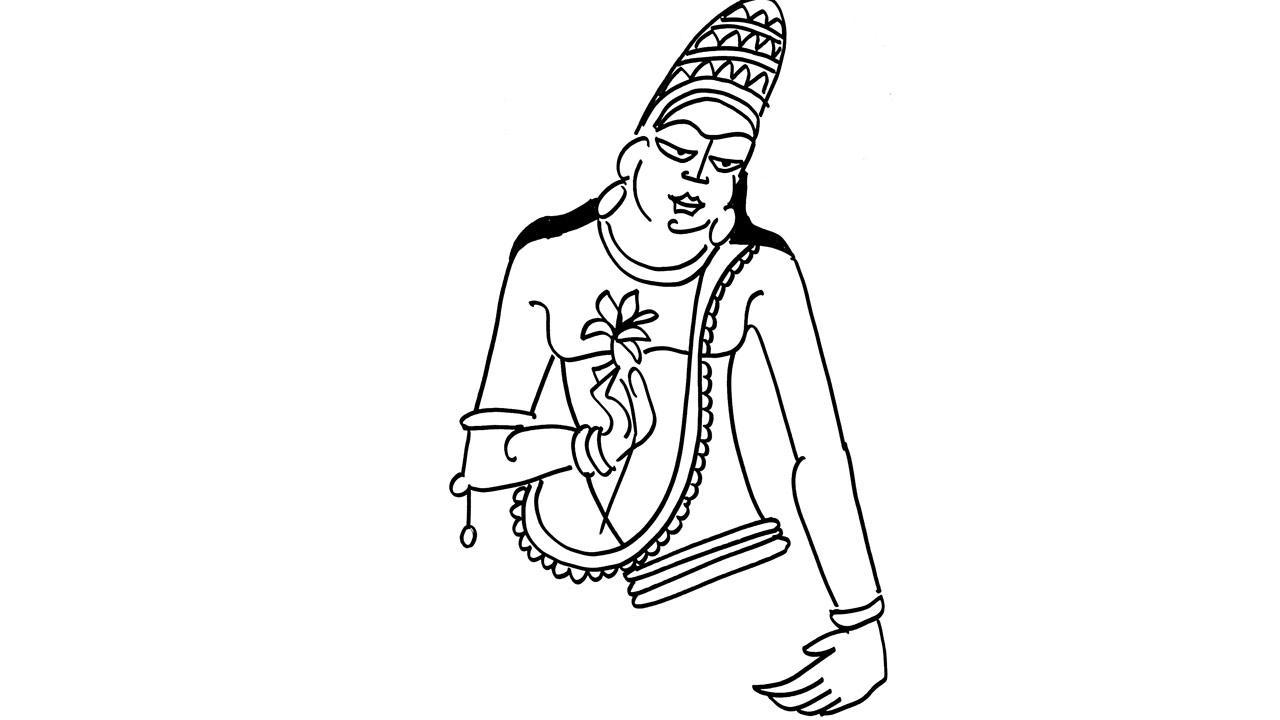They found almost 48 theories of the Buddha’s date based on Tibetan, Mongolian, Indian, Burmese, Senegalese, Chinese, Japanese, German, and English sources

Illustration/Devdutt Pattanaik
 In 1956, many countries around the world celebrated 2,500 years of the Buddha’s Parinirvana, or his final departure from the world. Sri Lanka and many Southeast Asian countries believe that this event took place in 544 BC. Hence, in writings, people assume that the Buddha lived about 2,500 years ago. But is that really so? Is that fact or belief? Scholars have been debating this for the past 100 years, and no one has come out the wiser.
In 1956, many countries around the world celebrated 2,500 years of the Buddha’s Parinirvana, or his final departure from the world. Sri Lanka and many Southeast Asian countries believe that this event took place in 544 BC. Hence, in writings, people assume that the Buddha lived about 2,500 years ago. But is that really so? Is that fact or belief? Scholars have been debating this for the past 100 years, and no one has come out the wiser.
ADVERTISEMENT
From a traditional point of view, most of our Buddhist knowledge is beholden to European scholarship on Buddhism. In the 19th century, the Europeans assumed that Pali scriptures from Sri Lanka and Southeast Asia are far more authentic than Sanskrit scriptures because they contain relatively fewer fantastic and mythological elements.
Over time, however, this 19th-century view has been challenged, and one observes that the fantastic and mythological elements in the Pali Canon are simply different, not more or less, than the fantastic and mythological elements in the Sanskrit Canon.
One Sanskrit source says that Ashoka became king 100 years after the Buddha’s Parinirvana. But a Pali source says it was 200 years later and therefore, according to historians, the Buddha’s Parinirvana happened not in 544 BC but in 486 BC. When one travels to Tibet, one finds that the chronology is pushed back to between 961 and 881 BC. In Chinese chronology, it dates from 1061 to 949 BC.
While the Pali Canon recognises that the date of Parinirvana is linked to the kingship of Ashoka, the Chinese canon links the Buddha’s Parinirvana to the rule of the Chinese Emperor Ming. As per East Asian legends, Buddhism was introduced to China 1016 years after the Parinirvana and to Japan 488 years after the Parinirvana. All these suggest that the Buddha lived three thousand years ago, not two and a half thousand years ago.
During the Meiji Restoration in Japan, which was a kind of cultural revolution, many Japanese historians spent enormous time and effort figuring out when the Buddha actually lived. They found almost 48 theories of the Buddha’s date based on Tibetan, Mongolian, Indian, Burmese, Senegalese, Chinese, Japanese, German, and English sources.
For how long did he live? The numbers vary from 78 to 85, with a general agreement of 80. One tradition says that he achieved Parinirvana three months after the rainy season, around the winter solstice, the same time that Christians celebrate the birth of Jesus Christ. However, traditionally, the Buddha’s birth, awakening, and extinction are celebrated in the month of Vaisakha. All these problems indicate and draw attention to the complexities of history.
How do we know when the Buddha actually lived? Did he actually live, or was it a set of ideas that finally got consolidated for the sake of transmission into the idea of a single person who was born in Kapilavastu? Or was it that there were many Buddhas imagined?
This complexity of history is forgotten by people most of the time and leads to unnecessary fights and conflicts. Perhaps we should, as the Buddha advised, not cling to these abstract ideas and accept them as delusions.
The author writes and lectures on the relevance of mythology in modern times. Reach him at devdutt.pattanaik@mid-day.com
 Subscribe today by clicking the link and stay updated with the latest news!" Click here!
Subscribe today by clicking the link and stay updated with the latest news!" Click here!







